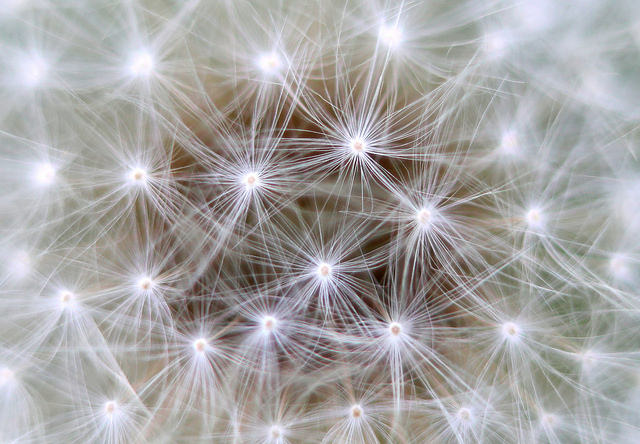 Health & Physiology
Health & Physiology
Toxic brain cells are a new target for treating neurodegeneration

After decades of research into the causes of neurodegenerative diseases, there is still no cure. Instead of focusing on the neurons that die in these diseases, they may be treatable by blocking the metamorphosis of helpful support cells into toxic support cells, or by pharmaceutically countering the neuron-killing toxin these harmful cells secrete.
Astrocytes, a type of glial cell, are the most abundant cell in the brain. Though we have known about them for over 100 years, very little was understood about their function both in normal development, and in response to injuries and in neurodegeneration. Key advances in the past decade have shown that they strongly promote the connections between neurons (called synapses), as well as provide nutrients and remove waste byproducts to help keep these neurons healthy and functioning normally. But what happens when things go wrong?
Astrocytes can rapidly transform into two main reactive states as a response to injury and disease. One state is a scar-forming or "A2" reactive astrocyte, which corrals the lesion to stop expansion of the injury. They are considered to be beneficial. But the second, called "A1" reactive astrocytes, release a toxin that kills neurons - further exacerbating the injury. We showed that A1 astrocytes are abundant in various human neurodegenerative diseases like Alzheimer's, Parkinson's, and Huntington's diseases, amyotrophic lateral sclerosis (ALS, or Lou Gehrig's disease), and multiple sclerosis. What is most amazing about this presence in human neurodegeneration is that these A1 toxic astrocytes are present exactly in regions where the neurodegeneration is most prominent, and not elsewhere in the brain - strongly suggesting that A1 astrocytes contribute to the death of neurons in neurodegenerative disorders. But how do non-reactive astrocytes turn into nasty reactive A1s?
Another type of glial cells, microglia, so called because they are incredibly small, are the resident immune cells of the brain (read also the Break: The power of our adaptive immunity against Alzheimer's Disease). These cells are primed to respond rapidly to a wide array of insults to the brain: infection, trauma, disease, and many others. We have been studying the interactions between microglia and astrocytes for some time, and have recently discovered a cocktail of signals that microglia secrete in response to these injuries. This cocktail released by microglia into their environment is both required and sufficient to turn non-reactive astrocytes into reactive A1s.
Once we knew how A1 reactive astrocytes are made in the brain, we went on to study what they do. We knew that non-reactive astrocytes can promote the formation of neuron-neuron connections (synapses) that allow the propagation of electrical signals from neuron to neuron. In a healthy brain, these synapses are constantly formed - a process that is needed to form new memories for example (read also the Break: Where is the Engram?). First, we found that A1 cells lack the ability to promote the formation of synapses.
Another important role of astrocytes is their capacity to provide nutritional support to neurons and keep them healthy. Although A1 astrocytes still appear to provide this support to neurons, we found that they also secrete a toxic factor that can kill many different types of neurons. After we knew that it is only the A1 reactive astrocyte and no other cells in the brain that can kill all these neurons, we tried blocking the formation of A1 astrocytes in an injury model where we knew that neurons would normally die. We found that without the presence of A1 astrocytes neurons did not die.
In neurodegenerative diseases, many neurons die over time, and the ones that don't die show reduced formation of synapses. These are precisely the changes that A1 reactive astrocytes bring about. And we have found A1 reactive astrocytes suspiciously in all the right places in human neurodegenerative disease. We are now working to see if A1s possibly drive neurodegenerative diseases, and hope to provide opportunities for the development of new treatments for diseases in which our brain cells die.
Original Article:
Liddelow S, Guttenplan K, Clarke L, Bennett F, Bohlen C, Schirmer L, Bennett M, Münch A, Chung W, Peterson T, Wilton D, Frouin A, Napier B, Panicker N, Kumar M, Buckwalter M, Rowitch D, Dawson V, Dawson T, Stevens B, Barres B. Neurotoxic reactive astrocytes are induced by activated microglia. Nature. 2017;541(7638):481-487. doi:10.1038/nature21029.Next read: How early-life adversity gets under the skin by Joanne Ryan
Edited by:
Massimo Caine , Founder and Director
We thought you might like
Fighting back antibiotic resistance: a new hope from the soil
Feb 24, 2016 in Microbiology | 4 min read by Dan KramerThe colour beige: heating up the fat
Apr 1, 2016 in Health & Physiology | 3.5 min read by Caterina Da RèOne run a day keeps the...cancer away!
May 5, 2016 in Health & Physiology | 3.5 min read by Per thor Straten , Manja IdornSERINC5: a blood cell guardian against HIV
May 13, 2016 in Health & Physiology | 3.5 min read by Massimo PizzatoMore from Health & Physiology
Tobacco smoking and other exposures shut off cancer-fighting genes
Aug 31, 2024 in Health & Physiology | 3 min read by Jüri Reimand , Nina AdlerA hidden clock that times cytoplasmic divisions
Aug 30, 2024 in Health & Physiology | 3 min read by Cindy OwWhen two kinases go for a dance
Aug 2, 2024 in Health & Physiology | 4 min read by Ioannis Galdadas , Francesco Luigi Gervasio , Pauline JuyouxAwakening the thymus to cure SARS-CoV-2 infection: a matter of genes
Jul 27, 2024 in Health & Physiology | 3.5 min read by Stefano Marullo , Cheynier RemiKeeping the balance: How epigenetics monitors cancer genes
May 13, 2024 in Health & Physiology | 4 min read by Zach Gray , Madison Honer , Johnathan WhetstineEditor's picks
Trending now
Popular topics


